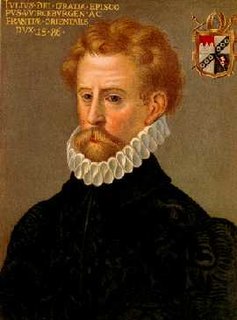
The Prince-Bishopric of Würzburg was an ecclesiastical principality of the Holy Roman Empire located in Lower Franconia west of the Prince-Bishopric of Bamberg. Würzburg had been a diocese since 743. As definitely established by the Concordat of 1448, bishops in Germany were chosen by the canons of the cathedral chapter and their election was later confirmed by the pope. Following a common practice in Germany, the prince-bishops of Würzburg were frequently elected to other ecclesiastical principalities as well. The last few prince-bishops resided at the Würzburg Residence, which is one of the grandest baroque palaces in Europe.

Prince Jerzy Radziwiłł ; 31 May 1556 – 21 January 1600) was a Polish–Lithuanian nobleman (szlachcic) from the Radziwiłł family. He was a Catholic bishop and cardinal. Radziwiłł was also an Imperial Prince (Reichsfürst).
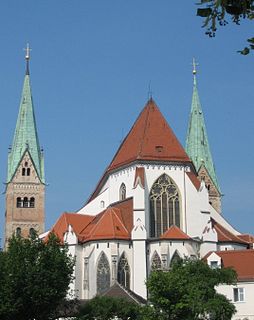
Diocese of Augsburg is a diocese of the Catholic Church in Germany. The diocese is a suffragan of the Archdiocese of Munich.
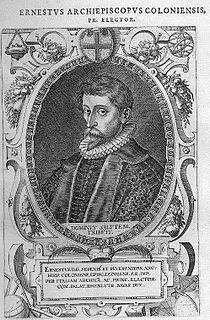
Ernest of Bavaria was Prince-elector-archbishop of the Archbishopric of Cologne from 1583 to 1612 as successor of the expelled Gebhard Truchsess von Waldburg. He was also bishop of Münster, Hildesheim, Freising and Liège.

Peter Ernst I von Mansfeld-Vorderort was an Imperial and Spanish army commander of German origin and Governor of the Spanish Netherlands from 1592 to 1594.

Anna of Pomerania was Duchess-Consort of Croy and Havré, and allodial heiress of the extinct ducal house of Pomerania.

The papal conclave of 1592, elected Pope Clement VIII in succession to Pope Innocent IX.
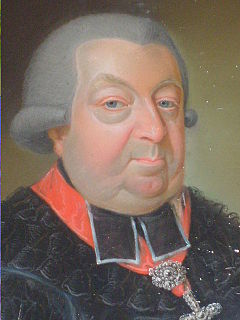
Christoph Franz von Buseck was the Roman Catholic bishop of Bamberg and the last Prince-Bishop of Bamberg.

Elisabeth of Anhalt-Zerbst was a princess of Anhalt by birth and Electress of Brandenburg by marriage.
Marquard von Berg was Prince-Bishop of Augsburg from 1575 to 1591.

Georg Schenk von Limpurg (1470–1522) was the Prince-Bishop of Bamberg from 1505 to 1522.
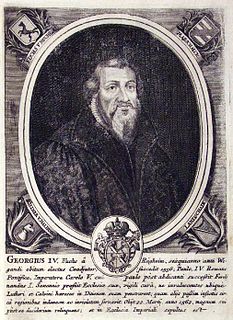
Georg Fuchs von Rügheim (1519–1561) was the Prince-Bishop of Bamberg from 1556 to 1561.
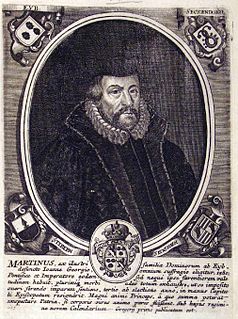
Martin von Eyb (1543–1594) was the Prince-Bishop of Bamberg from 1580 to 1583.

Neytard von Thüngen was the Prince-Bishop of Bamberg from 1591 to 1598.

Johann Gottfried von Aschhausen (1575–1622) was the Prince-Bishop of Bamberg from 1609 to 1622 and Prince-Bishop of Würzburg from 1617 to 1622.

Franz von Hatzfeld was the Prince-Bishop of Würzburg from 1631 to 1642 and the Prince-Bishop of Bamberg from 1633 to 1642.
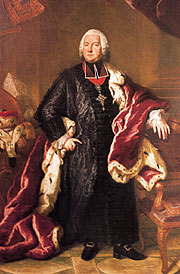
Adam Friedrich Graf von Seinsheim (1708–1779) was the Prince-Bishop of Würzburg from 1755 to 1779 and Prince-Bishop of Bamberg from 1757 to 1779.
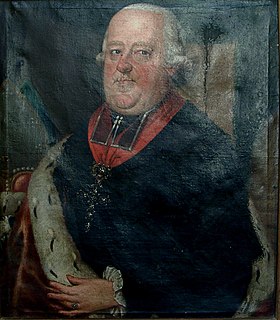
Georg Karl Ignaz Freiherr von Fechenbach zu Laudenbach (1749–1808) was the last Prince-Bishop of Würzburg, holding office from 1795 until 1803, when the Prince-Bishopric of Würzburg was mediatised to the Electorate of Bavaria. He continued to serve as Bishop of Würzburg, though without temporal power, until his death. He was also Bishop of Bamberg from 1805 until his death.




